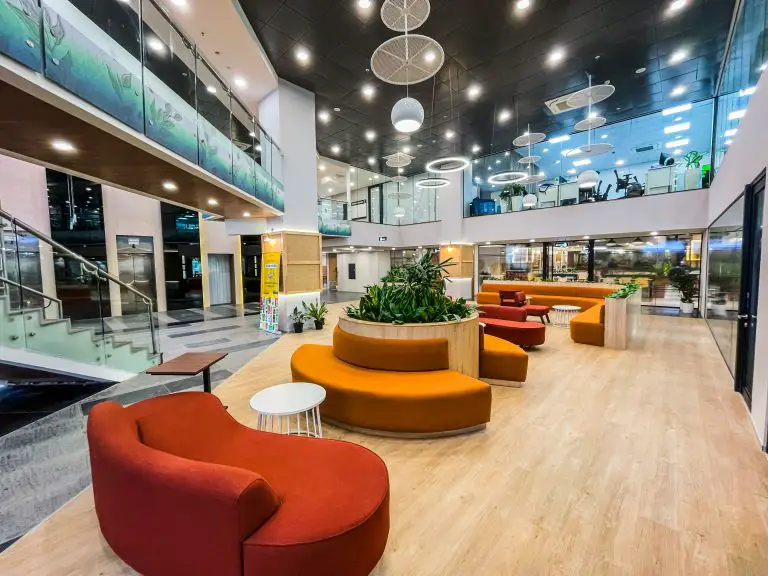Who would have thought that the pandemic would bring such a significant shift in working patterns globally? Before COVID-19, the concept of hybrid and remote working models was almost nonexistent. Even though it's quite appealing, the remote working paradigm has drawbacks. A few major ones are a lack of access to high-grade IT infrastructure and a private workspace. These challenges were expertly solved by flexible workplaces, which reinvented the idea of coworking spaces.
Harsh Binani, co-founder of India's largest managed workspace platform and flex space provider, Smartworks, is the primary driving force behind this innovation.
Top Trends Reinventing the Flexible Workspace Industry in 2023
2023 was a watershed moment for the workplaces, with most businesses reimagining their offices through a future preparedness perspective. However, some significant transformative trends and themes are projected to emerge in the next few years.
AI Integration and Data-driven Decisions
As technology advances, workplaces will become more intelligent and intuitive. Digitally enabled workspaces improve flexibility for both large and small firms, allowing them to respond swiftly to changing workplace cultures while reducing their financial consequences. Additionally, studies have shown that organizations that adopt digital workplaces report a staggering 43% increase in revenue. So, digitized workplaces are a big trend that Harsh Binani believes will rule the co-working sector in 2023 and thereafter.
On-demand Solutions and Dispersed Personnel
This is another major trend that will affect the future of flex office spaces. Companies with a small capacity would face significant costs in leasing and outfitting office space with the latest technology tools and infrastructure. Flex spaces are the perfect answer for on-demand workforce demands since they may be used for just one hour or a few months at a time, depending on your organization's demands. Domestic firms have been more open to adopting flex spaces, with their share rising from 35% in 2019 to 46% in H1 2022.
Decentralization in Flexible Workspaces
When flexible space became a hit, it was mostly created in important locations such as commercial clusters. However, every flex service provider is searching for areas away from the city centre or central region. Employee commute difficulties influenced the shift in priorities, referred to as decentralization. Employers are looking for options for office space in metropolitan locations so that their workers don't have to endure the long commute to work.
The commuting factor will play a major role in shaping the future of the flexible working sector. It forced service providers to think about using decentralized locations in place of managing staff transportation.
Creating an Agile Workplace
Creating agile and adaptable office space solutions has been crucial in 2023. But in the coming years, it will be much more important. An agile workspace empowers workers to customize how they utilize their workspace, which benefits them and has a minimum cost impact on the firm. In fact, according to a Statista survey conducted between December 2021 and January 2022 in India, most employees preferred a flexible workplace to increase their job satisfaction.
This trend provides us with a sneak peek into what the future of work could look like and how we think about avenues, infrastructure, and aesthetics in our workplaces.
Emphasize Fostering a Sense of Community
While individuals were working from home, collaboration—which is what offices are for—was hindered. Companies want to mend relationships not only within their workforce but also with the greater business community. Coworking spaces, in turn, emphasize community development among members through events, seminars, and networking opportunities.
An Increase in Businesses Using Managed Workspaces
Big and medium-sized businesses are also adopting managed workspaces; it's no longer simply startups and independent contractors. As hybrid and dispersed workforce models gain momentum, businesses are turning to cost-effective strategies to grow the workforce and optimize office operations.
Businesses can concentrate on their main company operations and free up staff time for strategy and innovation when outsourcing administrative and facilities management duties. Managed workspaces make this flexibility possible, encouraging a collaborative and creative environment that attracts workers.
Wrapping up
Economic standing and the dynamic nature of the workplace will remain the two primary determinants of workspace in the future. Flexible workspaces are suitable for any of these factors, as well as firms of all sizes. These trends offer a preview of the industry's future and show you how to take advantage of them to further your business objectives and position your organization for success.








